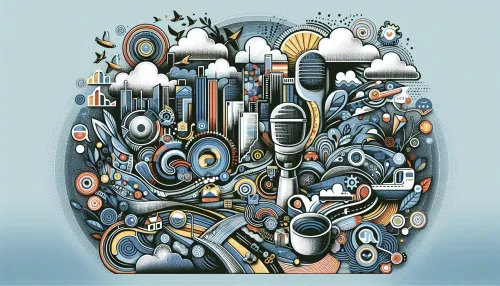Immersive Experiences Redefining Customer Engagement: AR and VR Dominate Digital Marketing Frontiers

In the forward-moving world of digital marketing, Augmented Reality (AR) and Virtual Reality (VR) stand as the twin pillars transforming the way brands interact with their consumers. No longer relegated to the fringes as futuristic concepts, AR and VR have permeated the present, introducing groundbreaking methodologies for immersive customer engagement. At ClicksBuzz Blog, we're diving deep into how these technologies are reshaping the nexus between brands and their audiences, turning ordinary brand encounters into dynamic, engaging narratives.
Crafting Interactive Brand Experiences Through Augmented Reality (AR)
Augmented Reality has matured from its early stages of public intrigue into a robust platform for interactive digital marketing. With its unique capability to meld digital overlays with the physical world, AR is revolutionizing the consumer experience. Through innovative applications, brands leverage AR to let customers 'try before they buy' in their own space, fundamentally altering the traditional shopping journey by adding layers of interaction and personalization.
Virtual Try-Ons and Visualizations: Retail giants from fashion to furniture are deploying AR to allow customers to visualize products in their own environments or on themselves, thereby reducing uncertainties in online shopping.
Engaging Marketing Campaigns: By incorporating AR into marketing campaigns, brands create interactive narratives that not only entertain but also educate consumers about their offerings in a compelling manner. For instance, cosmetic companies use AR filters on social media platforms allowing users to try makeup looks virtually.
Virtual Reality (VR): Expanding Beyond Gaming into Marketing Realms
Initially celebrated as a breakthrough in gaming technology, Virtual Reality has swiftly expanded its horizons, venturing into the domain of digital marketing with aplomb. VR’s true marketing prowess lies in crafting enveloping worlds that users can step into, offering a depth of engagement mere visuals cannot achieve.
Virtual Stores and Showrooms: With VR, businesses are designing immersive 3D stores and showrooms that customers can explore from the comfort of their homes. These virtual spaces not only serve as novel platforms for product discovery but also add an experiential layer to online shopping.
Immersive Brand Experiences: Travel and real estate industries are harnessing VR to transport potential customers to destinations or properties via virtual tours. This level of immersion creates emotional connections and facilitates informed decision-making processes in ways static images or videos cannot.
Related Article: Bridging Realities: How Augmented Reality (AR) is Shaping Future E-commerce Experiences
The Role of AR and VR in Amplifying Brand Storytelling and User Interaction
Beyond individual engagements, AR and VR elevate brand storytelling to new heights. By immersing audiences in vividly crafted narratives or simulated environments, these technologies foster emotional resonance and personal connections between brands and consumers.
Emotional Engagement through Narrative: Story-driven experiences become deeply immersive with VR, allowing brands to narratively transport users to different places, times, or situations. In turn, these stories can drive stronger emotional bonds with the brand.
Enhanced Product Interactions: AR enables interactive explorations of products. For instance, automotive brands use AR to let customers explore car features interactively; each tap brings up details or visualizes car modifications in real time.
Challenges and Triumphs in Implementing AR and VR in Marketing Strategies
The journey of integrating AR and VR into digital marketing is fraught with technological hurdles and budgetary constraints but punctuated by remarkable successes.
Technical Complexities: Developing smooth and engaging AR/VR experiences requires advanced technical expertise and infrastructure which can be daunting for many businesses.
High Costs: Initial setup costs for high-quality AR/VR content can be prohibitive for small to medium enterprises.
User Adoption: Despite growing interest, widespread adoption of AR/VR technologies by consumers remains a challenge. Ensuring user-friendly interfaces and accessibility is crucial.
Facing these challenges head-on, several brands have carved paths of success through innovative strategies using AR and VR–from global fashion retailers launching virtual dressing rooms to automotive companies offering immersive test drives from anywhere in the world. These examples not only showcase the potential impact of well-executed AR/VR strategies but also serve as beacons for others looking to venture into this space.
In summation, as we peel back layers on the roles and impacts of Augmented Reality (AR) and Virtual Reality (VR) within digital marketing on ClicksBuzz Blog, it's evident that while challenges remain, the opportunities for transformative customer engagement through these technologies are boundless. The future wave of digital marketing rides high on immersive experiences—a frontier where AR and VR reign supreme in connecting brands with audiences in deeper, more meaningful ways.
Check Out These Related Articles

Augmenting Reality in E-commerce: Shopping in the Fourth Dimension

Understanding the Impact of Voice Search on Consumer Behavior in Digital Marketing

Revolutionizing Real-Time Interactivity with 5G in Digital Marketing

